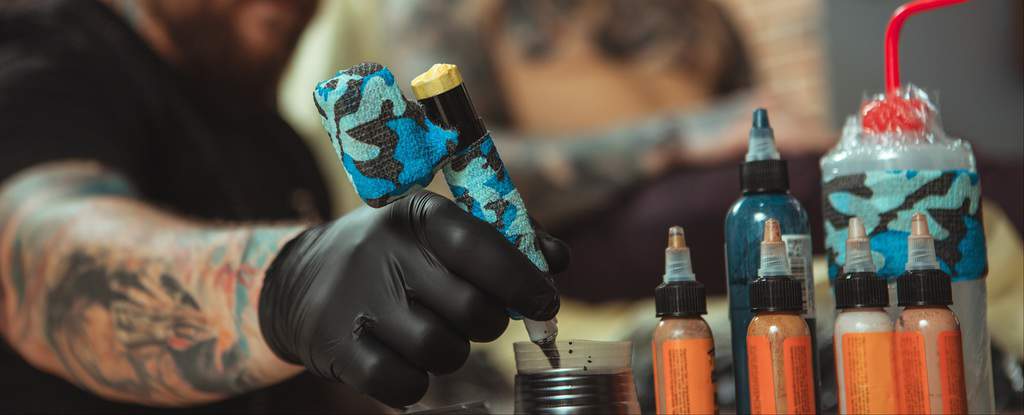
How Old Do You Have To Be To Get a Tattoo?
Are you looking for your first tattoo but unsure about minimum age restrictions in the United States? Read on for valuable information about tattoo age legislation and guidelines, and questions you may have about getting inked for the first time.
US Federal Laws on Tattoo Age Requirements
There are no Federal laws regarding age limits on tattoos; this being the US of A, the governing body leaves these decisions in the hands of individual states. Every state, as well as the District of Columbia have laws regulating the minimum age of tattoo clients, however these laws are less than straight forward in many jurisdictions.

State Laws & Exceptions for Tattoo Age Regulation
Many states including Montana, New Hampshire and Nevada have no specified minimum age requirement for tattoos, instead utilizing existing statutory laws that prevent persons under the age of 18 to enter legal contracts or render informed consent. I suppose this was easier than putting new laws specific to tattooing while still affecting the same outcome.
So, what about minors with parental consent? Once again this is not as straight forward as it may seem. Many states have minimum age restrictions even with written approval from a parent or guardian, some surprisingly low. In Idaho, for example, a 14 year old can get tattooed, branded, or pierced with a letter of parental consent signed in the presence of the artist applying the tattoo, or an agent that represents them. In Louisiana, 16 year olds can receive tattoos with the written consent of a parent or guardian, who must also accompany them and be present throughout the procedure.
The following infographic provides a handy snapshot of base regulations and parental approval requirements in each of the 50 states of the USA.
Like so many different laws and guidelines in the USA, regulation and enforcement of tattoo shops and artists is left up to the state. Texas is another interesting example of the different priorities that state entities place when it comes to body art. Even with written consent from a parent or guardian, it is illegal for anyone under the age of 18 to get tattooed, save some very specific circumstances.
According to Texas law minors (with parental consent) may receive tattoos intended to cover offensive, gang or drug related tattoos or “other words, symbols, or markings that the person’s parent or guardian considers would be in the best interest of the person to cover”. This legislation is also in place in Tennessee.
In California, 18 is the minimum age requirement for anyone wanting to get a tattoo, and anyone who provides a tattoo or solicits to provide a tattoo to a minor is facing misdemeanor charges from the state.
It also important to note: the final decision on whether a minor can be tattooed lies in the hands of the individual artist. Tattooists have the moral right to refuse service to those under the age of 18 – or restrict where they’re willing to put the tattoo design – whether the subject has appropriate parental/guardian approval.
Many practitioners refuse to tattoo intoxicated persons despite the fact there is no legal requirement they do so, just because you take your 14 year old son to get a tattoo in Boise, Idaho doesn’t mean you won’t get refused by a scrupulous artist.
Outside of the States, Canada and Mexico both have federal regulations placing the minimum age requirement for tattoos without parental consent at 18.
The different laws and regulations regarding tattoos are varied and nuanced, but the consensus is that anyone under 18 is considered a minor, and barring parental approval in a few states, no minors can legally be tattooed.
Now that you know whether you meet age requirements to get a tattoo in your state, below you’ll find some other insights into the complex history, business, and decision–making process of tattooing. This useful information may help should you need to sway a skeptical parent or guardian.

Minimum Age Requirements USA State Legislation
- Alabama – 18
- Alaska – 18
- Arizona – 18
- Arkansas – 18
- California – 18
- Colorado – 18
- Connecticut – 18
- District of Columbia – 18
- Delaware – 18
- Florida – 16* Must be accompanied by parent or guardian who can show proof of guardianship, both parent and minor must present photo ID, and a consent form must be notarized
- Georgia – 18
- Hawaii – 18
- Idaho – 14* Written informed consent of parent/guardian, executed in the presence of the person performing the procedure, or their agent/employee
- Illinois – 18
- Indiana – 18
- Iowa – 18
- Kansas – 16* Parent/guardian must give written consent, written consent must be notarized, and the parent/guardian must be present during the procedure.
- Kentucky – 18
- Louisiana – 16* Parent or guardian must consent, and their presence during the procedure is required
- Maine – 18
- Maryland – 18
- Massachusetts – 18
- Michigan – 18
- Minnesota – 18
- Mississippi – 18
- Missouri – 18
- Montana – 18
- Nebraska – 18
- Nevada – N/A
- New Hampshire – 18
- New Jersey – 16* Written permission of parent/guardian is required for tattooing
- New Mexico – 18
- New York – 18
- North Carolina – 18
- North Dakota – 18
- Ohio – 18
- Oklahoma –18
- Oregon – 18
- Pennsylvania – 18
- Rhode Island – 18
- South Carolina – 18
- South Dakota – 18
- Tennessee – 18
- Texas – 18
- Utah- 18
- Vermont – 18
- Virginia – 18
- Washington – 18
- West Virginia – 18
- Wisconsin – 18
- Wyoming – 18
Tattoos: A historical snapshot
People have been getting tattoos for centuries, and most often the process of permanently marking your body with ink served as part of a rite of passage. Warriors used tattoos to commemorate feats and achievements, proudly displaying their accomplishments for the world to see. Traditional tattooing in Maori and other Polynesian cultures was the Western world’s first contact with the practice, and it quickly became popular among sailors.
This original tattoo culture was as rough around the edges as the sailors and seamen who chose to decorate their bodies with this new and fascinating decoration. Drawing inspiration from the nautical elements that shaped everyday existence for these salty characters these early tattoos featured ships, anchors and cannons, as well as strict rules regarding the symbolic meaning of different designs.
Tattoos have come a long way since parlors in the back of pool halls and $5 ink. As was the case for alcohol consumption in this time period, if you were tall enough to see over the bar, or serve on a ship, then you were old enough to get a tattoo. This laissez-faire attitude helped spread the popularity of tattoos, but also probably led to some hungover and regretful mornings for many young men.
The Modern Tattoo Business
According to researcher and author of U.S. Tattoo Parlors, Tattoo Removal & Body Piercing Services: An Industry Analysis, John LaRosa, “Tattoos and body art in the U.S. have soared in popularity lately…fueling an industry comprised of 20,000 tattoo parlors or studios. The industry, which also includes body piercing and tattoo removal, is estimated to be worth $3 billion, and is growing strongly.”
In modern times the tattoo industry is stringently regulated. Individual tattooists and the studios employing them are subject to strict health and safety regulations and codes of conduct, with hefty fines and imprisonment the punishment for not adhering to these rules.
Each state has its own list of requirements for prospective tattoo artists, mostly focused on health and sanitation as well as licensing and a test about ethical business practices.
The tattoo industry is a thriving market with an estimated 20,000 shops in the United States alone. Nowadays shops are professional settings that are undoubtedly more relaxed than other ventures. But make no mistake: tattooists take their business, art and livelihood seriously, so a healthy dose of respect is always warranted.

Getting Inked for the First Time
We are now much better informed about the different laws regarding age requirements, with some being a bit surprising (looking at you Idaho!). With age 18 the de-facto minimum for most Americans seeking a tattoo, what’s the process of getting linked like?
With anything as permanent as a tattoo, deep consideration should be given to the design, and more importantly, the placement. In the past many people chose a bicep or chest piece for their first tattoo, making sure that the design could be hidden by clothing should the need arise. However, nowadays, in the world of Post Malone, Mike Tyson’s tribal face tattoo, and increased cultural awareness and acceptance, tattoos take on a more visible profile.
The first step is do some research. Find a style that appeals to your sensibilities and a design that you would be happy flaunting (or keeping to yourself) for the rest of your days. From there, find a shop and artist that suits your choice of application, is within your price range, well and near your location or one you wouldn’t mind travelling to.
Always make sure to review an artist’s work before committing to a piece, and clearly understand the pricing parameters before you sit in the chair. Other important considerations when choosing your first tattoo include studio reputation, artist availability, appointment scheduling and deposits, and reviews from previous clients.
Once, a studio, artist and design are chosen, arrangements are made and you’re in the chair, it’s time to sit back, relax and let the buzzing of the tattoo gun lull you to sleep…or at least that’s the idea.



